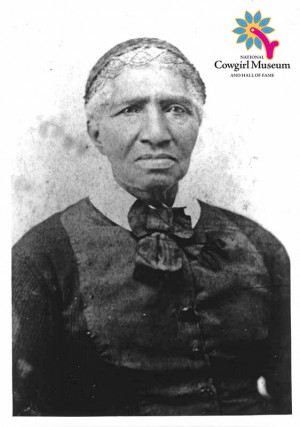Born a slave in Virginia around 1800, Clara Brown would become a pillar of the community that built the city of Denver, Colorado. The first time she was sold was a young child, along with her mother to a man named Ambrose Smith. When she was about 18 years old, she received his permission to marry another of his slaves named Richard. They had four children together, Richard, Margaret, and twins Paulina and Eliza Jane. At eight years old, Paulina drowned. Ambrose Smith died a few years later and Brown, Richard, their three remaining children were sent to the auction block to settle his estate. All five were sold to separate owners. She tried to keep track of them, but her daughter Margaret and her husband Richard later died. Her son Richard and her daughter Eliza Jane were sold many times over and she lost track of them, but never gave up hope that she would see them again. She worked for her next owner until he died in 1856. Only then was she able to purchase her freedom. Brown headed west, hearing that Eliza Jane might have moved that direction. She joined a group of prospectors headed to Colorado in search of gold. She served as their cook and walked alongside the wagons for most of the 700-hundred-mile trip. She did not find her daughter in Denver and continued to Central City. In need of money, she set up a laundry service, which quickly became successful. Along with several other side jobs, such as cooking, catering, and cleaning, she was able to save up $10,000 by the end of the Civil War in 1865. She invested in mining claims and real estate. Brown created the area’s first Sunday school and was instrumental in founding the St. James Methodist Church. Her home was always open to those in need and served as a hospital, hotel, and refuge. She fed and clothed the homeless and delivered babies. Missing her own, she began to travel to find Eliza Jane and Richard. Searching all over Kentucky and Tennessee, her family was not to be found, but she still brought back several recently freed slaves and helped them find jobs. In 1864, a flood swept through Denver, destroying much of the town. Brown’s papers proving land ownership were lost. In 1873, a fire swept through Central City and Brown lost her home and several other properties. The community that she had helped for so many years saved up and bought her a cottage in Denver. In 1882, around 80 years old, Brown travelled to Council Bluffs, Iowa, where she heard word that Eliza Jane was there. Reunited after 47 years, they returned to Colorado to live together until Brown’s death three years later. Her funeral was heavily attended, including the mayor of Denver and the governor of Colorado. She is still venerated as a true pioneer in Colorado.

